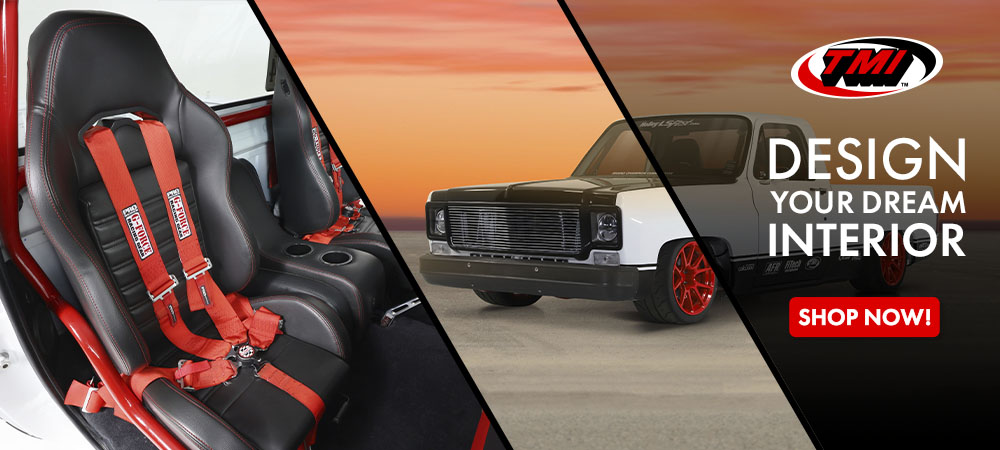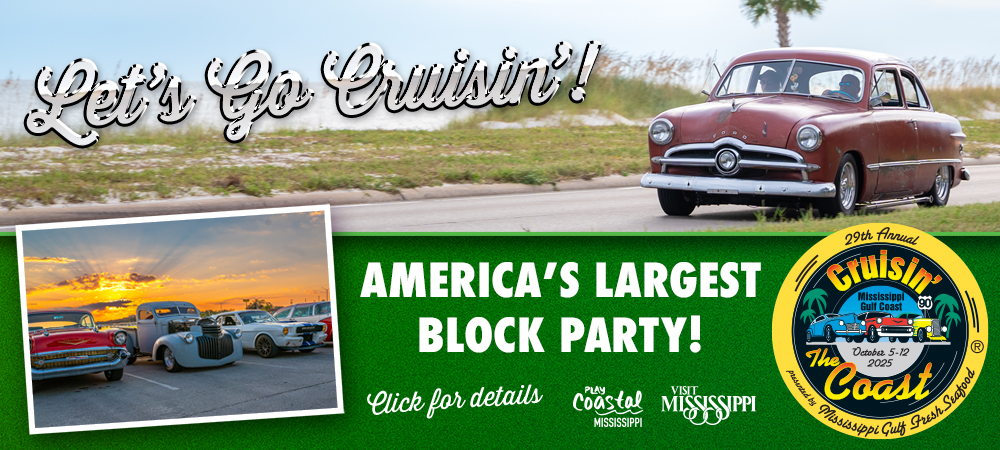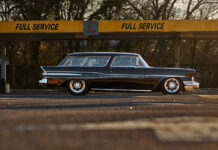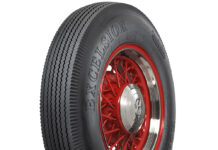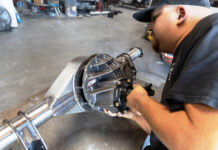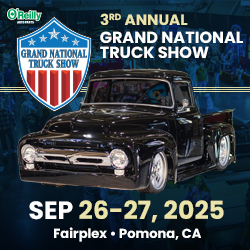SaltWorks Fabrication Built 1938 Lincoln Zephyr
By Brian Brennan – Photography By John Jackson
You see enough 1932 Fords, Tri-Five Chevys, and so on and you begin to think there is a familiarity. We would be willing to bet that while all of us are familiar with the looks of late-’30s Lincoln Zephyrs, it’s one hot rod or custom we don’t see every weekend. Such is the case with Pete Gulick of Virginia and his 1938 Lincoln Zephyr.
Yet, there is “something” about this custom that makes us stop and think. That may be because back in 2002 this very Zephyr won a BASF Most Beautiful award while attending a Good guys event. At the time it was owned by Mike Shiflett who joined efforts with Tim’s Hot Rods to build the award-winning coupe.
Read More: How To Convert To Electric Brake Boosters
Roughly two decades later Pete had his own vision. Working together with Thom Ophof of SaltWorks Fabrication out of Sarasota, Florida, the two fused their ideas and efforts and redressed this great-looking Zephyr custom into a fresh vision. For sure it needed the custom touches in its presentation, but Pete also wanted it to perform like a modern hot rod, hence the Ford Coyote V8 engine. It should be noted that the Third-Generation 5.0 Coyote debuted in 2018 and is still in use today. Producing 460 hp and 420 lb-ft of torque in its stock configuration, it makes for an ideal engine for a heavyweight custom. It should also be noted that additional engineering features were added to the Third-Generation 5.0 Coyote, making it more docile at low-speed driving and ideally suited for our cruising lifestyle.
Ford Motor Company needed something that was more affordable as the country began its post-depression era. Hence, the Lincoln Zephyr itself was the creation of designer John Tjaarda of the Briggs Body Company, think Model A among others, who combined his efforts with Eugene T. “Bob” Gregorie, a Ford designer. Introduced in 1936, this ’38 Lincoln Zephyr was turned into an amazing representation of what can be done to the “teardrop” design when made into a custom.
The all-steel 1938 Zephyr body highlights a 3-1/2-inch chop at the front, a “pancaked” hood, stretched fenders, “suicide” doors, flush-mounted skirts, and a stretched “catwalk” area (the sheetmetal between the rear window and trunk). (A little something on “pancake.” Basically, it means taking a minimal amount of metal from the hood to give the appearance of a flatter look, hence pancaking. Oftentimes, this sheetmetal application is approached with a minimalist effort so as not to make the adaptation “jump out” at you but rather be understated. Having seen this done on numerous hot rods and customs over the years we believe the minimalist approach serves the overall design better.) The incredible amount of sheetmetal and subsequent bodywork and the final application of the PPG Porsche Graphite Blue was all handled at SaltWorks Fabrication. (Careful, this color comes in a “metallic” and a “solid” color.) Running sans bumpers and a minor amount of bright trim, the Graphite Blue on this 1938 Zephyr really does stand out but doesn’t overpower the custom car appearance. Indeed, the color truly complements the one-of-a-kind Curtis Speed billet wheels that measure 17×7 and are wrapped with wide white Diamondback tires; the fronts are 225R/60 and in back 245R/60. Interestingly, in this build you can only truly see two of the wheels as the rears are hidden behind the flat-mounted fender skirts. One last note on the metalwork. SaltWorks Fabrication machined the billet grille in-house and it is a nearly identical representation of the factory grille.
Read More: David’s Dream 1938 Ford Coupe Build
All this good-looking custom sheetmetal rides around on a SaltWorks Fabrication modified Zephyr frame that features a Total Cost Involved front clip with a C-notch in the rear. The TCI Mustang II Independent Front Suspension is used along with TCI airbags, a 7/8-inch sway bar, power rack-and-pinion steering, Wilwood brake kit 13-inch rotors, and four-piston calipers. The rear end is based on a Ford 9 inch rear end with 3.73 gears and 31-spline axles held in place with a TCI four-link. Once again, Wilwood brake kit 11-inch rotors and four-piston calipers (and master cylinder) and airbags are engaged. All the prerequisite fabrication was done at SaltWorks Fabrication to make the complete chassis come together.
As mentioned earlier, the powertrain is based on a Third-Generation Coyote 5.0 engine that is connected to a Ford 6R80 transmission (4.17, 2.34, 1.52, 1.14, 0.87, and 0.69:1) overdrive automatic transmission operated by a trans-mounted Lokar shifter through a custom SaltWorks Fabrication handle. The Coyote engine is neatly topped off with a Borla Vertical Stack EFI system and features eight 55mm throttle bodies, billet machined 35mm tall air horns, high volume -10 fuel rails, 50-lb/hr fuel injectors, cast-aluminum intake, cast alloy valley plate, throttle position sensor, adjustable fuel pressure regulator, a billet capstan linkage kit, and sandwiched between custom SaltWorks Fabrication valve covers. A Holley Terminator X Max ECU is used along with a Holley ignition system. The exhaust manifolds are 1-3/4-inch Ford with 2-inch stainless tubing that connect with a pair of stainless steel Porter mufflers moving the disbursed exhaust gasses out.
Read More: Unconventional 1941 Willys Coupe
Rounding out the modern-day approach is the interior with its reworked OE dash with shortened “waterfall” that now accepts the restyled air vents that flow fresh cooled air via a Vintage Air system. The original 1938 Lincoln Zephyr gauges were refinished by Redline Gauge Works with new electronic internals. From here SaltWorks Fabrication handled the wiring utilizing a Coach Controls wiring harness and system. The steering column comes by way of an ididit steering column with a Juliano Banjo wheel that is leather wrapped. The ’00-era Lincoln power bucket seats that are adjacent to the custom center console are upholstered in maroon leather by Hot Rod Interiors by Chuck. Other stitchwork by Chuck include the Mercedes square-weave carpeting, the Alcantara headliner, door and kick panels, as well as the neatly appointed trunk.
There can be no mistaking a custom Lincoln Zephyr as they are distinctive in stock trim and often become even more so when exposed to the customizers touch. MR
Click on this issue’s cover to see the enhanced digital version of Coyote Swapped Custom Lincoln Zephyr.



















